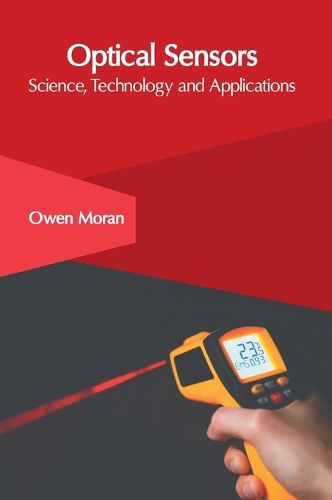Readings Newsletter
Become a Readings Member to make your shopping experience even easier.
Sign in or sign up for free!
You’re not far away from qualifying for FREE standard shipping within Australia
You’ve qualified for FREE standard shipping within Australia
The cart is loading…






Optical sensors are a broad class of devices that are designed to detect and convert incident light rays into electrical signals. The most common types of optical sensors include transmission-type photo-interrupters, reflective photosensors, photoconductive devices, photodiodes, and phototransistors. Transmission-type photo-interrupters detect the presence of objects by intercepting light. These are used in position sensing and measuring the speed of rotation. Reflective photosensors detect the motion of objects by measuring the reflection of light across them. Optical sensors are ubiquitous components in electronic devices and equipment having several applications in industrial, consumer, healthcare and automotive fields. Biomedical devices for breath analysis and heart rate monitoring are some biomedical applications of optical sensors. They are also helpful in detecting liquid levels in process engineering facilities, such as petroleum levels in tank farms and hydrocarbon refineries. This book outlines the processes and applications of optical sensors in detail. It is a vital tool for all researching and studying this subject.
$9.00 standard shipping within Australia
FREE standard shipping within Australia for orders over $100.00
Express & International shipping calculated at checkout
Optical sensors are a broad class of devices that are designed to detect and convert incident light rays into electrical signals. The most common types of optical sensors include transmission-type photo-interrupters, reflective photosensors, photoconductive devices, photodiodes, and phototransistors. Transmission-type photo-interrupters detect the presence of objects by intercepting light. These are used in position sensing and measuring the speed of rotation. Reflective photosensors detect the motion of objects by measuring the reflection of light across them. Optical sensors are ubiquitous components in electronic devices and equipment having several applications in industrial, consumer, healthcare and automotive fields. Biomedical devices for breath analysis and heart rate monitoring are some biomedical applications of optical sensors. They are also helpful in detecting liquid levels in process engineering facilities, such as petroleum levels in tank farms and hydrocarbon refineries. This book outlines the processes and applications of optical sensors in detail. It is a vital tool for all researching and studying this subject.